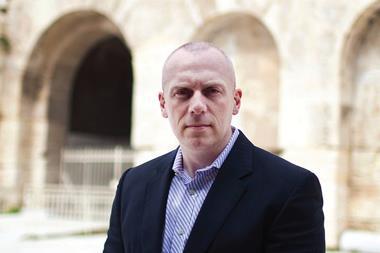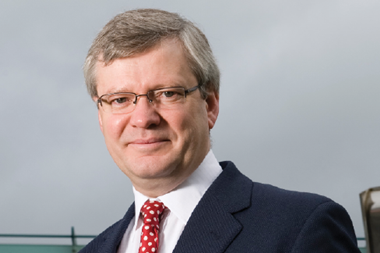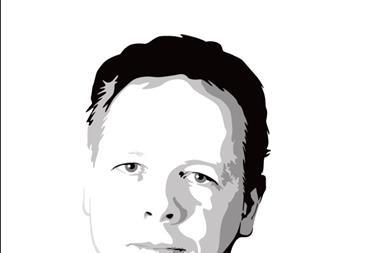We need to be less confident about our new intangible world, says the corporate director of risk at meat-processing multinational Campofrio

The biggest risk to a multinational firm such as Madrid-based meat-processing giant Campofrio Food Group (CFG) is the one you don’t see coming.
This is the judgment of the company’s corporate director of risk, Cristina Martinez, based on her experience after joining the company from Spanish airline Iberia in 2009.
“No one can be as good as all of us together,” says Martinez, referring to the in-house group of experts she leads, CFG Risk Community.
The group acts as a champion to allow the objectives and strategy of a newly established risk management function to be transmitted to all levels of the organisation.
Martinez has a broad geographic responsibility. Campofrio runs factories in nine countries - Spain, Portugal, Italy, France, Belgium, Switzerland, Romania, the Netherlands and Germany - and corporate risk management feeds into all the major functional committees, such as legal, finance, supply chain and audit.
Martinez says: “My responsibilities include the definition and implementation of the overall enterprise-wide risk management; business continuity programmes, which include crisis management; insurance management; and providing support to HR for employee benefits-related issues.”
Whereas at Iberia, Martinez reported to the chief financial officer, at Campofrio she reports directly to the general counsel.
“The great evolution in the last three years follows the general counsel’s strong commitment to create a structured approach to risk management in the company,” she says.
“Without the continued support and practical approach to managing risks of the general counsel, CFG would not have achieved this recognition of the risk and insurance market as a leading and innovating company.”
Without this support, she says, it would have been difficult to implement the ERM programme that won this year’s StrategicRISK award.
We are now moving into a more intangible world where it’s much tougher to identify risks
But the common element between Martinez’s last job and her role today is the wellbeing of the consumer, be they airline passengers or 250 million worldwide customers of processed meat products.
“The job at Campofrio is not more stressful than at Iberia, just different,” she says. (You could not accuse Martinez of failing to be fully engaged in the business - she always refers to “my products” when referring to Campofrio’s output.)
Positive risk culture
The dangers facing a modern corporate are constantly accumulating but they aren’t necessarily visible.
To combat this, argues Martinez, “everybody has to become responsible for risk in a company-wide risk culture”.
No easy thing to instil in a company of 11,000 people working in plants across much of Europe, the culture has to align head office, line managers, workers and everybody else in a way that makes all of them alert to unseen risks as well as more easily quantifiable ones, such as a factory fire, product contamination and other ever-present dangers.
Campofrio has embedded a positive risk culture where risk-related concerns can be raised by each functional area, and are then included on the corporate risk management’s agenda.
Also key has been organising regular crisis management workshops across the group, where participation is encouraged from all the functional committees to share best practices and lessons learnt.
One recent crisis underlined the importance of the entire company pulling together to minimise the damage.
When a fire broke out one Friday evening in one of the company’s factories, a much-tested system swung into action on the site, while the Madrid headquarters focused on the larger risk.
“As a risk manager I’m also responsible for insurance, but our focus in these incidents is on business continuity,” says Martinez.
“And this was our first operational event as a group since I joined.”
Even before the flames were extinguished, teams assembled to co-ordinate the recovery programme in the premises. Result? The factory re-opened the following Monday. Mission accomplished.
But, just as important, the group-wide rescue proved how much more effectively a company can retrieve a situation when it works together. “The whole group benefited from the exercise,” she says.
Worldly wise
Although she has just turned 36, Martinez is something of a guru in the risk sector. A regular lecturer on the subject, and a member of Ferma’s board of directors, in 2009 she helped establish Spain’s risk management association, Igrea, to develop the skill within the country’s listed companies, and to promote ERM.
Some of those companies certainly need it. As Martinez can vouch, many underestimate the importance of a structured business continuity programme.
If Europe had properly implemented ERM systems, maybe the economical and financial environment would be different.
And although she puts the threat posed by fires, floods, security issues, contamination and other omnipresent risks at the top of her agenda, Martinez believes the future is fraught with as yet unidentified risks that will require a new way of managing them.
“We are now moving into a more intangible world where it’s much tougher to identify risks because they are more difficult to quantify,” she argues.
“We should be using different metrics and new parameters because these risks are not part of the traditional portfolio. We need to be less confident [about this new world] than we are.”
Martinez has an actuarial background and might be expected to put most of her faith in more conventional risk management tools.
Instead she believes that the current toolkit is unable to capture the main elements of risks faced by multinationals, and that we need to develop techniques that probe more deeply into the corporate culture to shed a light on emerging threats.
Her view of the world of risk recalls that of former US secretary of defence Donald Rumsfeld on the increasingly obscure nature of risk.
Rumsfeld described known unknowns (“some things we do not know”) and unknown unknowns (“things we do not know we don’t know”). The lesson for Martinez is that, to head off such risks, a company has to move much faster than it did in the past.
Three big operational risks … or opportunities?
Big-company syndrome
“The bigger you are, the more dangerous your exposure,” says Cristina Martinez, referring to a multinational company’s vulnerability to what might be called the head-office phenomenon, whereby senior executives lose touch with the bulk of a far-flung firm’s activities, putting at risk the execution of the entire corporate strategy.
“Big organisations can get too far away from consumers and workers,” says Martinez.
Her solution is to establish a strong internal control framework and build friendly and practical tools and IT solutions.
“The big issue is how to transform all that unstructured information into useful and accurate data to take decisions,” she says.
Do behave!
“What keeps me awake at night is mainly [the issue] of people’s behaviour and attitudes,” says Martinez.
It comes down to whether communications within the company are such that everybody from the top down is in the same loop, taking decisions that are ultimately good for the company.
“CFG Risk Community’s motto refers to drawing positives from any kind of situation,” she says.
“This is how we build a positive culture of risk as we aim to translate any unexpected event into a potential opportunity.”
Keeping up
The digital revolution in the form of the ‘always-on’ society is changing the corporate risk game.
“This is the age of rapid change with great speed of communications,” says Martinez.
“Consumers’ opinions on things critical to the company are moving so quickly that it could lead to dramatic changes in demand.
“To combat that, it’s vital to increase the flexibility of the company. The big question for a firm like Campofrio is how quickly we can react to these sudden changes of opinion. The decision-making process has to speed up.”
CV
- Madrid-born Martinez has degrees in economic science and actuarial and finance science from Madrid institutions, a postgraduate marketing qualification from the Madrid Chamber of Commerce and Industry, and a diploma in risk management. She is now studying for a PhD in the subject.
- In 1998 she joined Iberia Airlines as technical analyst, becoming head of risk and Iand insurance in 2005. Martinez joined Campofrio Food Group as director of corporate risk management in April 2009.
- She is a member of the board of directors of FERMA (European Federation of Risk Management Associations), and a board member of Spain’s risk management association IGREA.
- At StrategicRISK’s annual awards in London this year, Campofrio’s ERM programme was recognised as the best in the EU.




















No comments yet